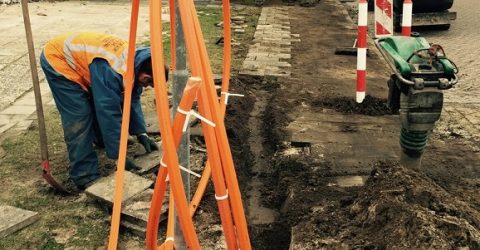Ten ways to tackle unreliable broadband connections

As 2018 draws to an end, most households in Britain will have at least one internet-connected present under their Christmas tree.
Some families will have a slew of online devices wrapped up for the 25th, as web connectivity transforms everything from toys and games to kitchen utensils and appliances.
An unreliable broadband connection won’t just spoil Christmas Day. It’ll have a year-round effect on our ability to work at home, shop online and keep in touch with friends and family.
If a temporary outage has been caused by a workman putting his digger arm through underground fibre cabling, it may be necessary to wait until the infrastructure is repaired.
However, there are numerous other causes of underperforming or unreliable broadband.
Some of these might be reduced – or eliminated altogether – with our suggestions below…
Ten tips for tackling unreliable broadband
- Keep records of outages and performance dips.
- Try to establish whether neighbouring properties are also experiencing poor internet connectivity.
- Check and restart every piece of hardware.
- Consider recent changes or purchases.
- Invest in replacement cables.
- Reposition the broadband router.
- Minimise wireless communications.
- Replace the router.
- Buy a 4G WiFi dongle.
- Look for an alternative provider.
There might be a recurring theme to connection issues – whenever the microwave oven is on, or when the kids are playing Xbox.
WiFi connections are particularly prone to interference, with numerous devices attempting to send data packets across the 2.4GHz spectrum.
Are connection issues common within your postcode, or unique to your house?
If neighbours are enjoying the information superhighway while you’re stranded on the hard shoulder, a hardware issue could be culpable…
Broadband routers benefit from occasional reboots and software updates, just like computers and tablets.
Microfilters occasionally fail, so beg, steal or borrow one and plug it into your main telephone socket to see whether there’s any improvement.
Deteriorating broadband performance might have coincided with the introduction of a new device to the home – or even outside it.
Alarm systems regularly cause interference with wireless signals, so think creatively about possible causes of disruption, from baby monitors to car alarms.
The wires within cables sometimes become frayed or broken, causing either intermittent or permanent problems with no visible cause.
Buying new Ethernet cables could drastically improve connection speeds. Cat6 cabling distributes data much faster than Cat5 variants, despite looking identical.
If problems chiefly relate to wireless connectivity, the router may be poorly located.
Try positioning it a few feet off the ground centrally within the property, away from impenetrable materials like metal or glass. Performance and reliability could improve.
Ethernet cables provide quicker and more stable data streams than WiFi.
If you can’t hardwire Ethernet-enabled devices into the router, Powerline adaptors distribute high-speed internet data around the home via plug sockets.
Mass-produced broadband provider routers rarely deliver strong signals. Cost-cutting assembly could lead to electrical faults affecting performance.
Virgin customers need to piggyback a new router through their existing Super Hub, whereas other providers permit wireless data distribution using any compatible router.
A wireless dongle from one of the Big Four mobile networks might be useful in an emergency.
They harness mobile 4G networks, piping data to either one device (plug-in USB dongle) or a local area network (mobile WiFi router).
Despite their best intentions (and quoted connection speeds), sometimes a provider just can’t deliver a reliable service.
In this instance, you may be well advised to look for an alternative provider, especially if it means changing from an Openreach phone line connection to cable (or vice versa).






